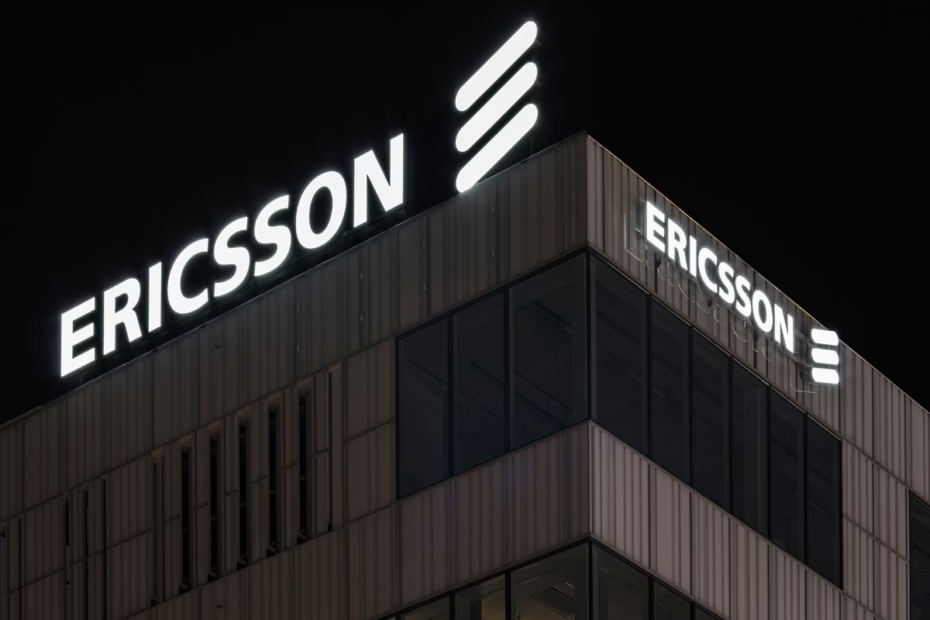Ericsson has introduced advanced 5G radios, antennas, and RAN Connect solutions to boost network efficiency and sustainability.
The company is making this announcement ahead of Mobile World Congress, MWC 2025 in Barcelona. The new products will help communication service providers (CSPs) improve their networks while reducing costs and energy use.
The company will launch 130 radio products in 2025 to support open and programmable networks. These products will make up two-thirds of Ericsson’s deliveries this year. They will allow CSPs to build future-proof and high-performing networks.
A New Era of Network Evolution
Ericsson’s many-core architecture enables programmability while maintaining excellent customer experience. The flagship product, AIR 3266, is a powerful wide-band TDD Massive MIMO radio.
It features 400W output power and an ultra-slim design. Moreover, it improves spectral efficiency and uplink performance while reducing energy use by 30 percent. It also lowers embodied carbon by up to 50 percent. The AIR 3266 has 32-branch transceivers and runs on the latest Ericsson Silicon technology.
Ericsson has also introduced RAN Connect, a set of open fronthaul solutions that maximize scalability. These solutions help CSPs aggregate radio traffic and enhance network efficiency. RAN Connect supports modern RAN Compute capabilities, strengthening Ericsson’s leadership in the next generation of RAN evolution.
The key RAN Connect products include:
- RAN Connect 6381: An outdoor solution with 600Gbps capacity, offering high efficiency and scalability.
- RAN Connect 6682: A high-capacity fronthaul solution with 1.2 terabits per second (Tbps) throughput, ideal for large deployments.
- RAN Connect 6681: A 600Gbps indoor solution optimized for various interface configurations.
According to Mårten Lerner, Head of Product Area Networks at Ericsson, “With cutting-edge hardware designs, we are reducing costs and maximizing efficiency for our customers as they evolve their architectures to deliver high-performing programmable networks that cover all connectivity needs.”
He added, “Sustainability is also central to every solution, leveraging energy-efficient designs, recyclable materials, and passive cooling to meet Net Zero targets. These advancements embody the artistry of network evolution.”
Also Read: Meta to Build 50,000 km Undersea Cable to Link Five Continents
Next-Generation 5G Innovations
Ericsson’s portfolio also includes new radios that improve network performance and reduce energy use:
- AIR 3285: A dual-band FDD Massive MIMO radio that provides four times higher uplink capacity. It is the lightest in its class at 30kg. It reduces energy use by 30 percent and embodied carbon by 40 percent.
- AIR 6494 and AIR 3265: The AIR 6494 is a 64-branch wideband TDD Massive MIMO radio with 480W output power, cutting energy use by 30 percent. The AIR 3265 is a 32-branch ultra-light radio with 25 percent energy savings and a 30 percent lower embodied carbon footprint.
- Radio 4451HP and Radio 4491: Advanced FDD radios with improved efficiency. Radio 4451HP cuts energy use by 20 percent and embodied carbon by 25 percent. Radio 4491 delivers 720W output power in a lightweight design, using 20 percent less energy and 40 percent less embodied carbon.
Ericsson is also introducing the Indoor Fusion Unit 8828 for indoor 5G coverage. It supports multiple operators and extends coverage up to 8,000 square meters. It can connect up to eight Radio Dots.
The Interleaved Antenna 8001 and 8002 combine low-band FDD with Massive MIMO TDD and FDD in one antenna. This simplifies installation and reduces site rental costs. The antennas feature upgradable passive antenna technology for better performance.
Ericsson’s Antenna System portfolio improves coverage and energy efficiency. The flagship Antenna 4818 offers up to 85 percent efficiency while reducing embodied carbon by 42 percent. It enables better carrier aggregation, higher modulation, and more MIMO scheme use.
The Power D620 is a Smart DC distribution system for remote energy management. It reduces on-site interventions and prioritizes critical services. The system’s zero-watt sleep feature eliminates energy use during radio sleep intervals. This improves overall RAN energy efficiency.
Ericsson’s latest innovations will help telecom operators stay ahead in the evolving 5G landscape. The company remains focused on sustainability, cost-efficiency, and high-performance networks for the future.

